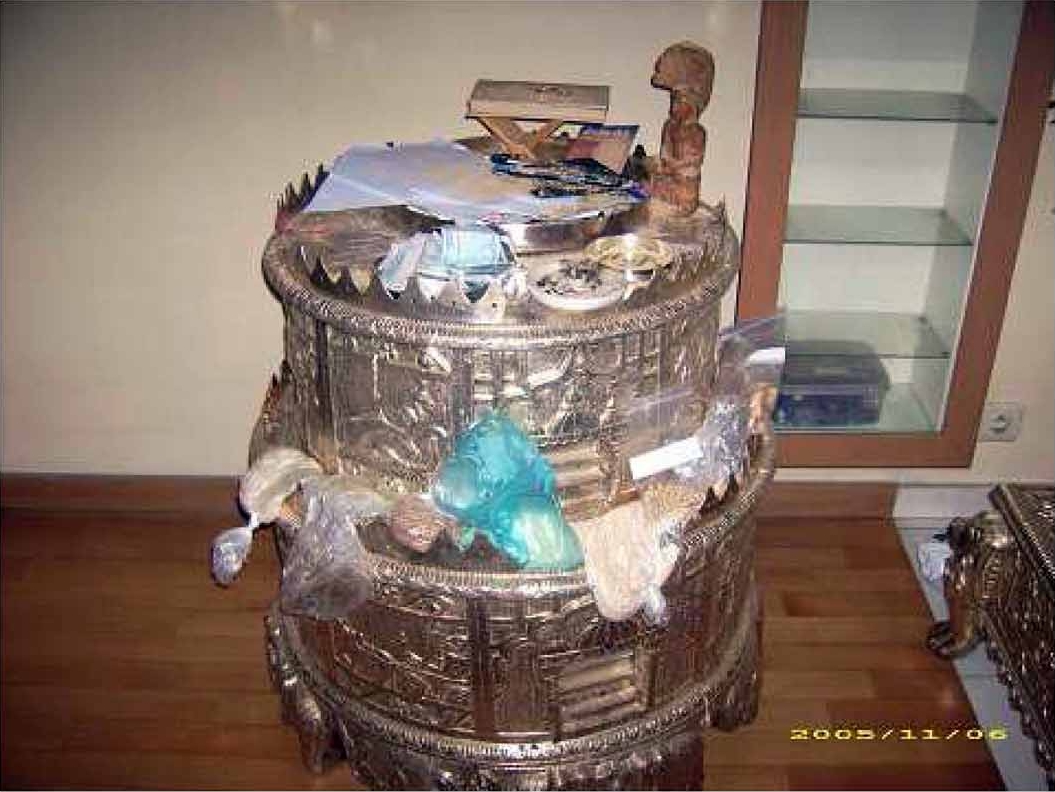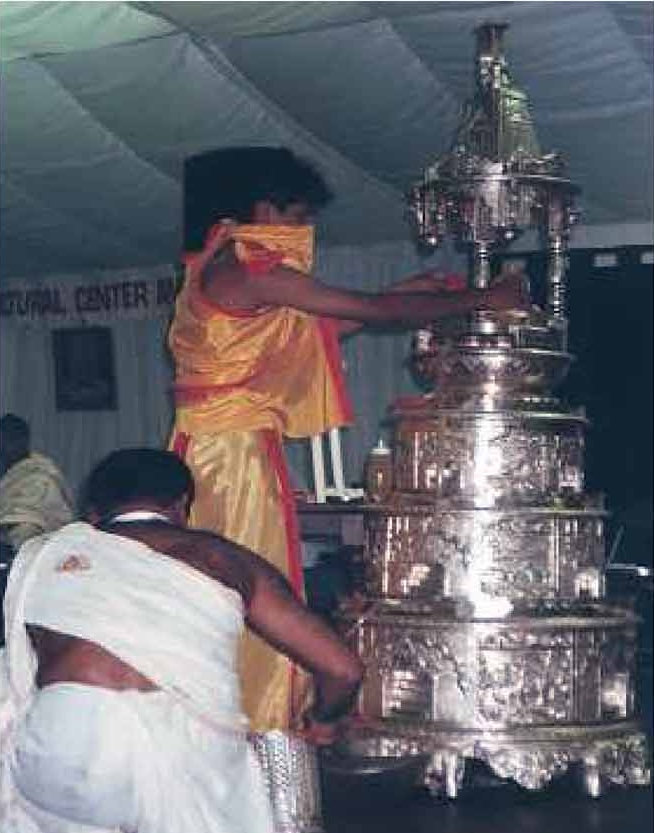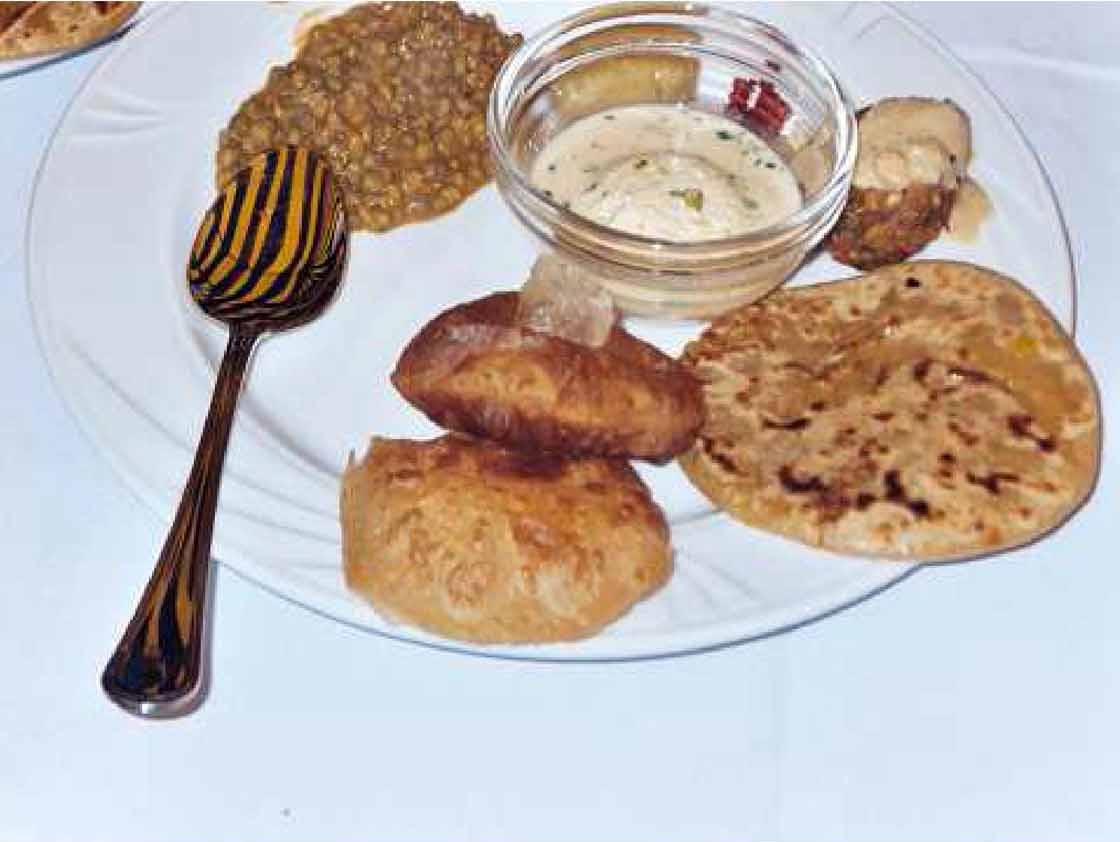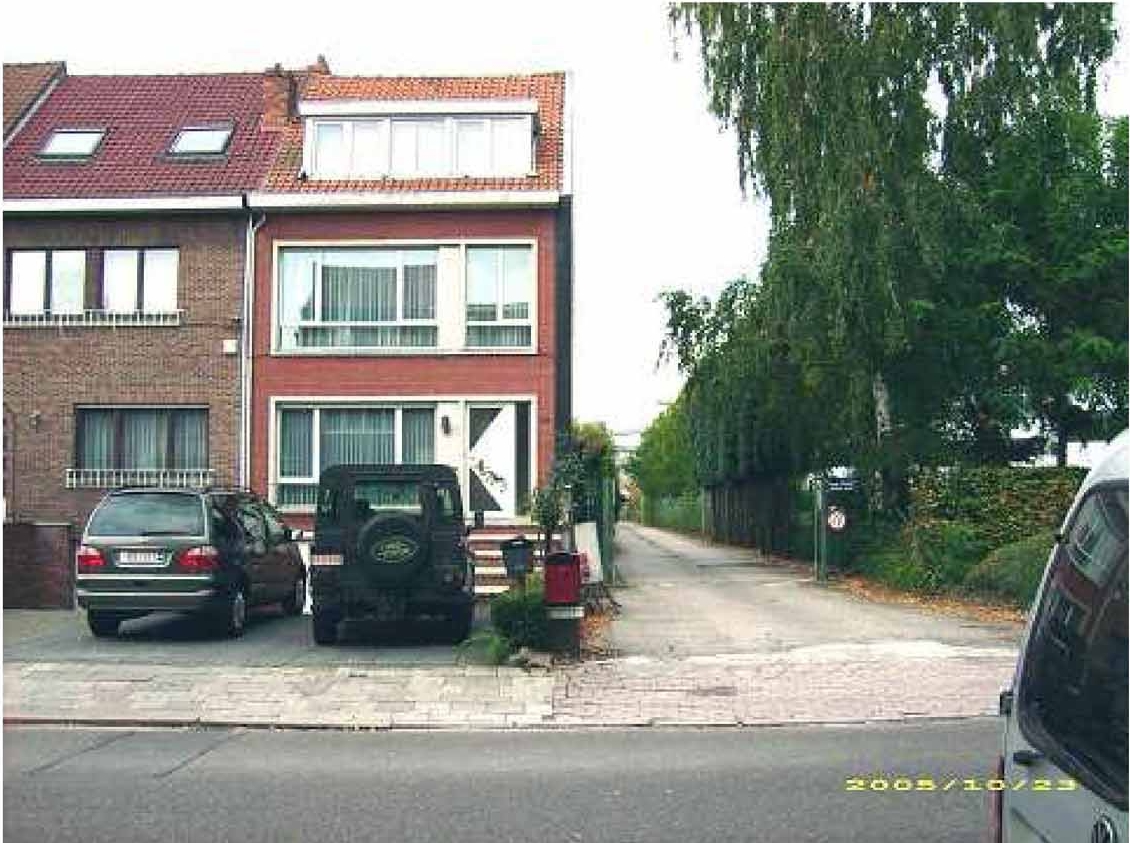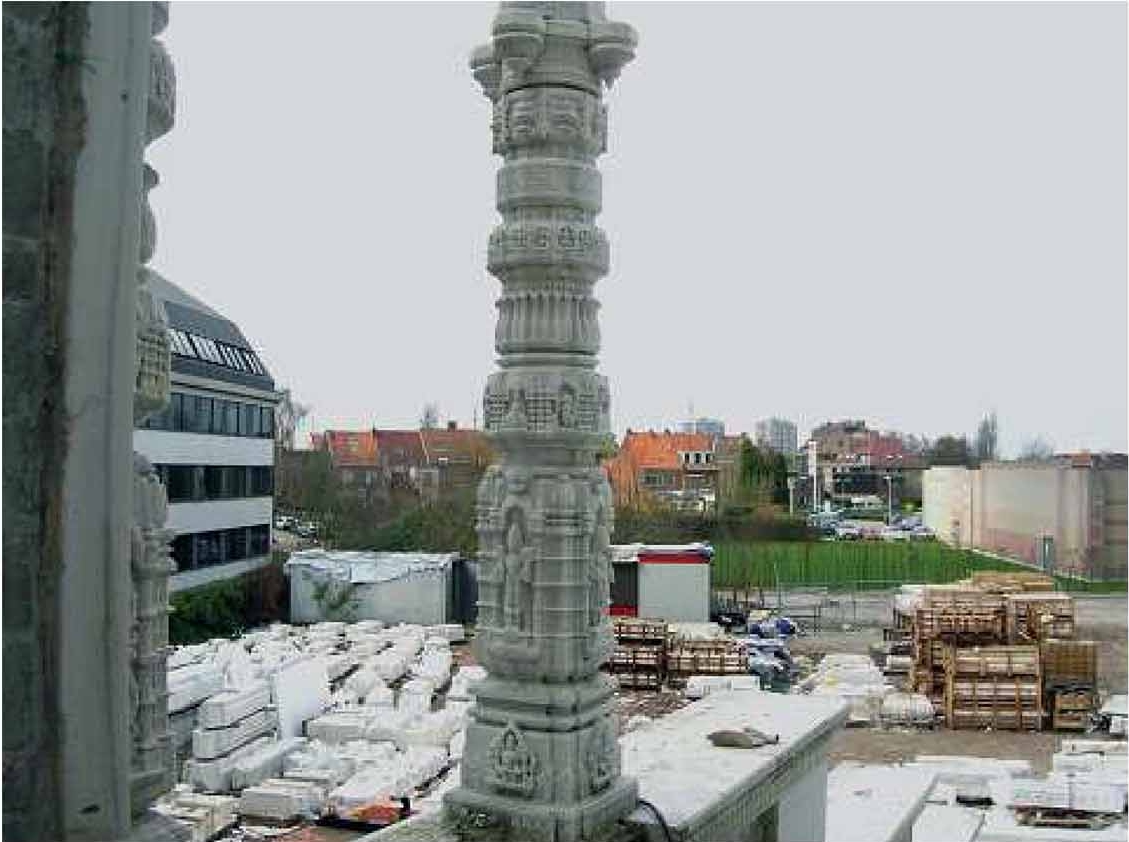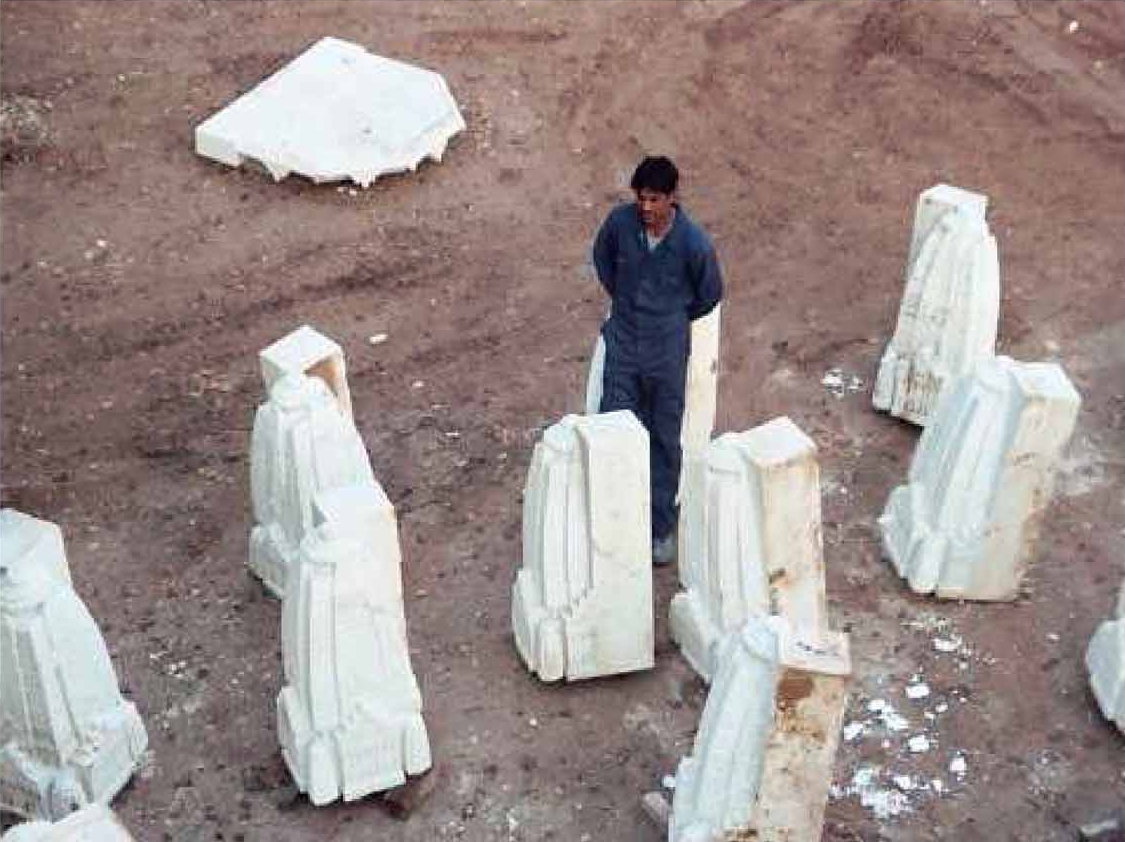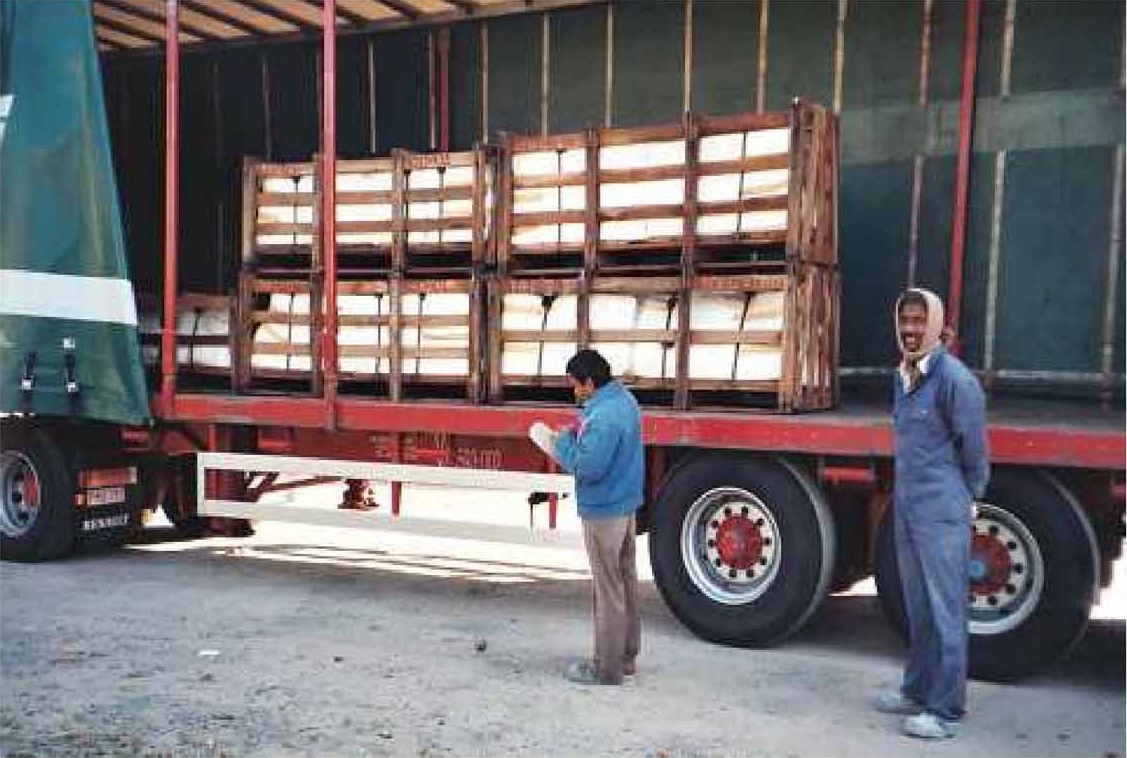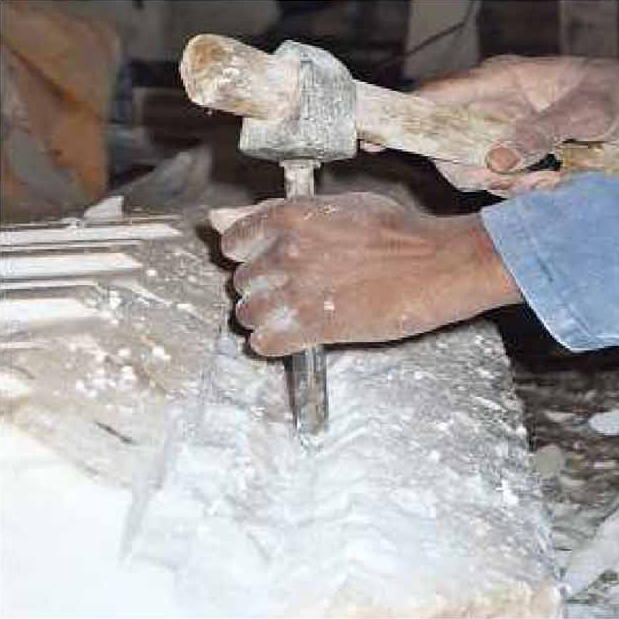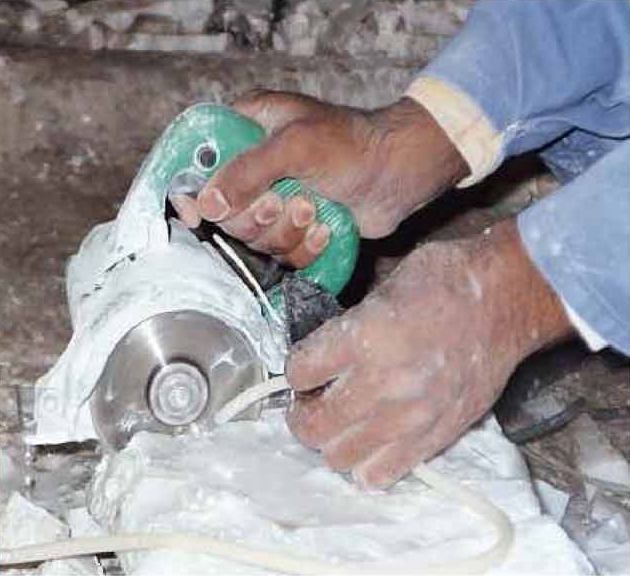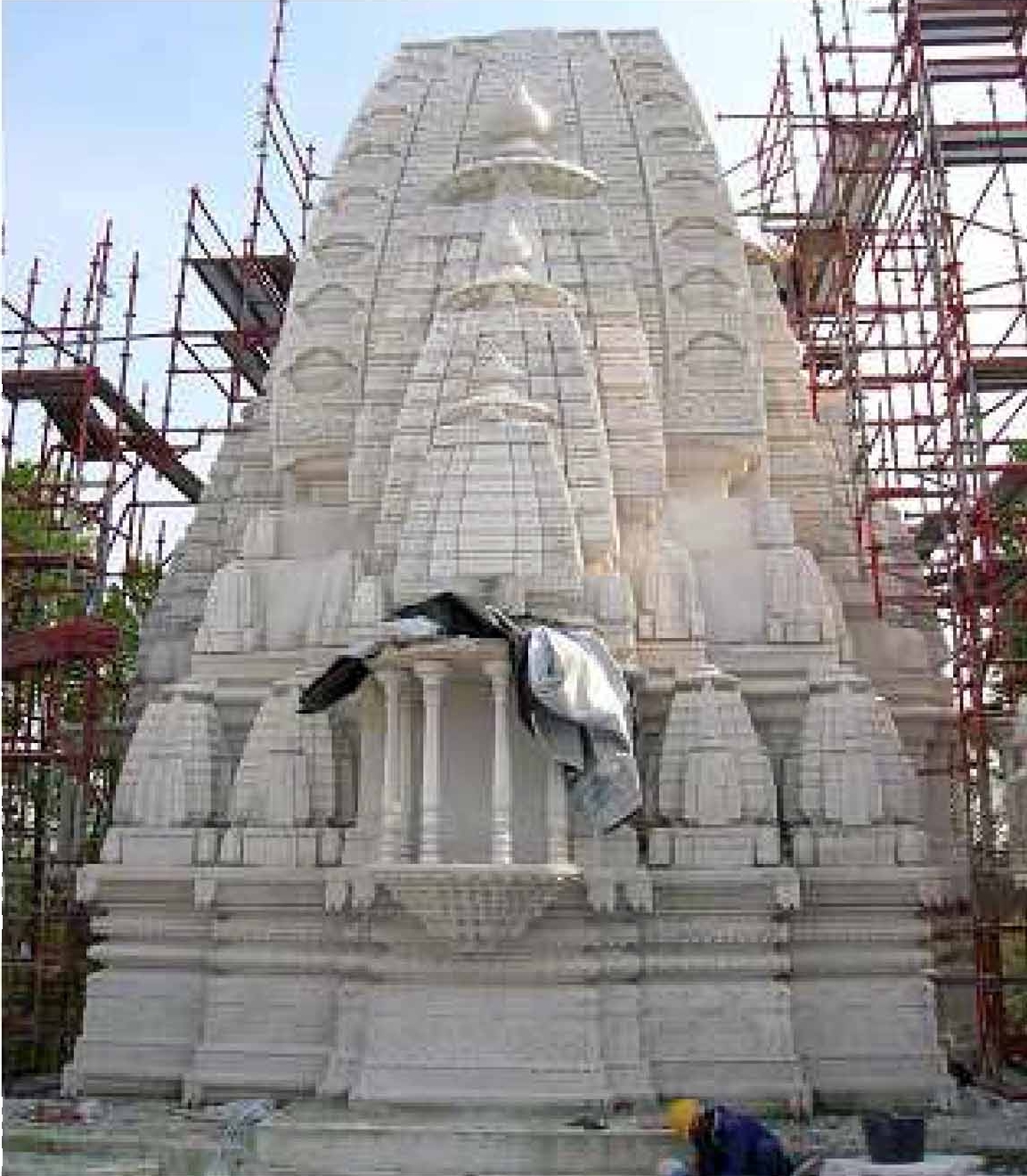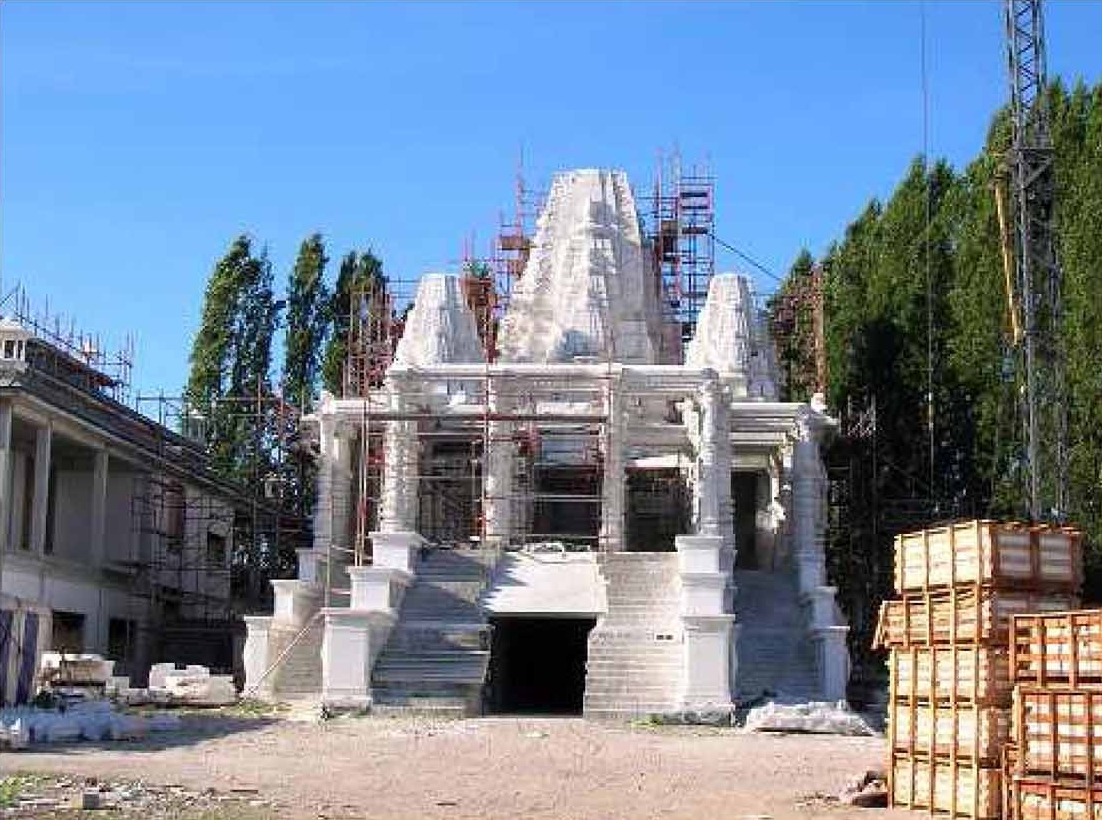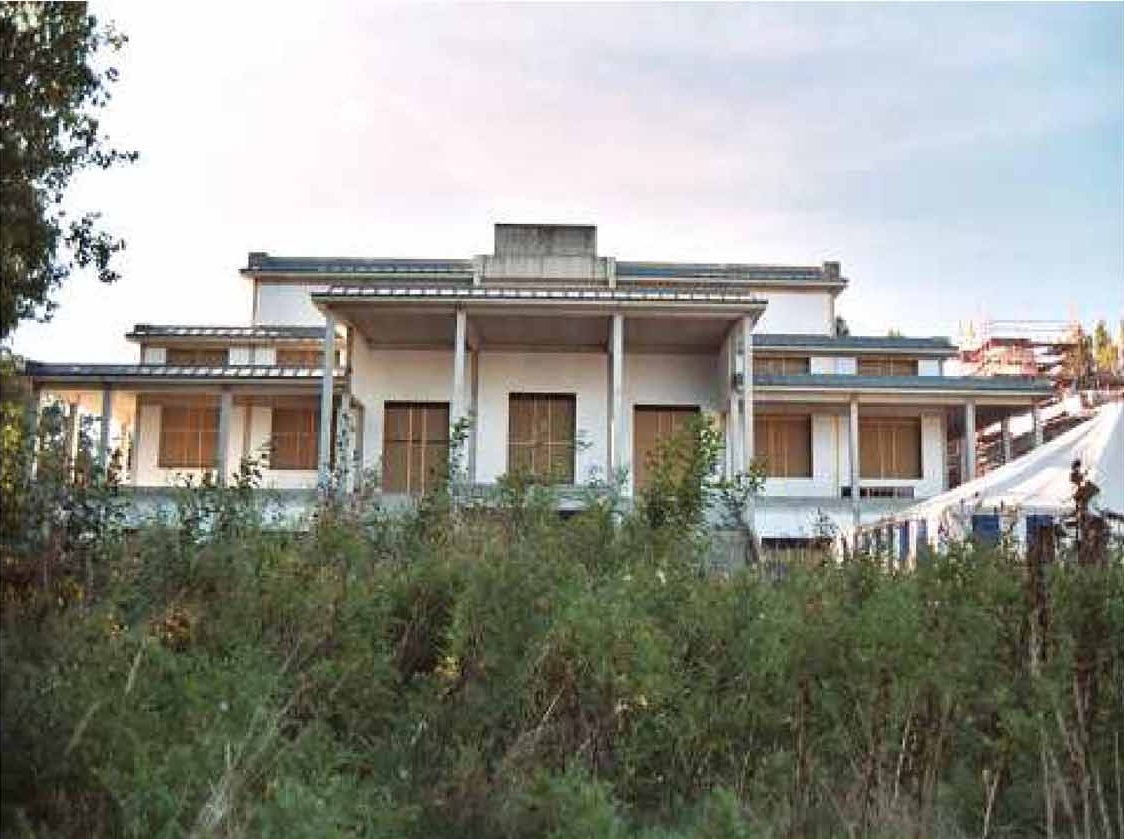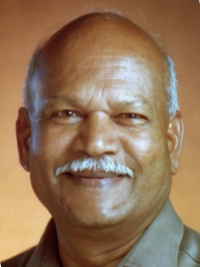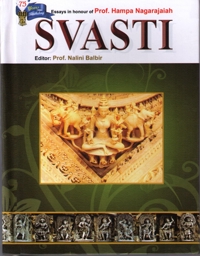33
The Jains in Antwerp/Belgium
An Overview
Introduction
One might wonder what there is to see in the one-horse town of `Geitendorp`, as Wilrijk, a borough of Antwerp, is often called. But an early morning walk through this part of the city has many a surprise in store. Wandering along Sneeuwbeslaan, you will hear Indian sounds from loudspeakers break the silence. Each morning and evening at the same time the chiming of a bell can be heard for approximately ten minutes. But hardly anyone from the local population knows what goes on behind the evergreen hedges on the 4000m² compounds.
And yet the first Indian migrants arrived at Antwerp as early as 1948. Today (2006/2007) 310 families live here in third generation. The men work exclusively in diamond trade, whereas the women work in the house. Economically, diamond trade, which lies in the hands of the Jains, plays a major role for the city of Antwerp. Religiously, the migrants belong to one of the various Jain traditions. They come from the state of Gujarat in north-western India. Unlike many minorities of refugees and immigrants, this comparatively small group holds considerable financial means. This makes many things possible and certainly contrasts the financial straits that characterize many Diaspora communities. The foundation of the Jain Cultural Center Antwerp (J.C.C.A.) in 1992 was the first step towards the planning and building of a new Jain temple in traditional style. The construction work itself started in 2001.
Entering the Field
My situation can be described with the words: From outland to outland.
In July 2004, I decided to move from the Netherlands to Belgium. For coming in touch with the Jains in Antwerp and doing a research which had never been done before, it was necessary to live at the same place where they live. I stayed in Antwerp till December 2007. Normally it is very difficult for somebody from outside to enter this community. One reason for this could be the seclusive nature of the diamond business.
Another obstacle was that the Jains have no common area where they can come together for a longer period of time. This made it very difficult to get in touch and to find informants. Doors that had just been opened were closed again in the next moment. It felt like looking for a needle in the haystack. But patience, openness and empathy were soon to be rewarded.
Jains in Antwerp
This article is giving an overview of the Jain Community in Antwerp/B. I lived very close to this community for four years. To collect the data I needed took me several years, from 2004 to 2006. I was able to collect them mainly by participating observation, by active participation, and by many talks and visits with the Jain families. This is an explorative study focusing on the religious life, the construction of the temple, and the guru network of the Jains in Antwerp.
In comparison with the Jains in the USA and England, [1] the Jain diaspora in Antwerp is very small. The number of Jains living out of India reportedly varies between 70,000 and 80,000 (Dundas, 2002) and one million (Jain Center, Toronto, 1998). There are no exact statistical data available around the Jains, but the following figures are acceptable: There are around seven million Jains worldwide. Around six million Jains are living in India, which is less than 1% of the whole population. The largest Jain diaspora is to be found in North America, comprising 60,000 people, the second largest - 10,000 people - in the UK, followed by 10,000 in East Africa and 310 families in Antwerp. Till today, no research has been done around the Jain immigrants in Antwerp. There are only studies available around Germans, French, Polish, Italians, Jews, and Turkish and Moroccan migrants in Antwerp. According to the mailing list [2] of the Indian Community, there are 310 Jain families living in Antwerp. All Jains in Antwerp have come directly from Gujarat to Antwerp for diamond trade. Most of them came to Antwerp at the end of the 1970s or in the early 1980s. Most of them are between 40 and 60 years old. In the meantime, many of them got the Belgian nationality or an unlimited residence permit. In the early days, the migrants settled close to the diamond centre, where many Jewish families live as well. After some time, the Indian migrants bought land in the district of Wilrijk, where they proceeded to build their villas. Today many Jain families also live in Edegem and Schoten, districts where many villas are to be found, too.
The diamond business in Antwerp refers back to a tradition of four centuries. In the book ‘Brilliant Story of Antwerp’, [3] one can find an exact documentation of the historical development of the diamond business in Antwerp. History shows that the diamond trade in Antwerp has always been in the hands of migrants up to the present date. The Flemish port on the Schelde river, with its convenient infrastructure and its attractive conditions favoring migration and business, made it easy for Indian diamond dealers to choose Antwerp as their second place of home. Antwerp, the most important port of Belgium, counted 949 000 inhabitants in January 2005. Antwerp has the most important world trade centre for diamonds. The city has four stock exchanges, around 1,600 diamond companies, and one diamond museum. The diamond business, which had been in the hands of Jewish traders for four centuries, has moved to the hands of the Jains. In very short time the Jains were able to take the leading role in the diamond business. They took the companies over from their fathers or established new ones operated by their sons and grandsons in the second and third generations today. There are big differences in the history of migration, in particular as compared to the Jains in Leicester, London, and Manchester. Most of the Jains in the UK migrated twice, first from India to South Africa, and in the 60s - 70s to England or the USA. As mentioned previously, the Jains in Antwerp migrated from India to Belgium for economical reasons in order to extend their trading network and to enhance their standard of living. Most of the migrants came to Antwerp without their families. The women and children moved to Antwerp later. The diamond business has always been the domain of men, and this has never changed till today.
The religious life of the Jains in Antwerp
Religious Profile of the Antwerp Jain Diaspora
The Jain diaspora consists of various subgroups of the Svetambara tradition. Only one family belongs to the Digambara tradition. The members of the families spread over two main branches of the Svetambara: The Deravasi and the Sthanakvasi. While Deravasi and Sthanakvasi are equal in number, a small group of around thirty families belongs to the Shrimad Rajchandra Movement, and around ten families are Terapanthi.
Jain Traditions in Antwerp
Svetambara
Digambara
Sthanakvasi
Terapanthi
Deravasi (temple construction)
Shrimad Rajchandra Movement (guru network)
Daily Practices
With the beginning of the temple construction, the Jains established a small temple where they perform ashta prakari puja every day and aarti every evening.
Every morning, a group of between five and ten men celebrates the ashta prakari puja together, which is a very special feature of Jain puja.
Annual Practices
The first feast in the year is gyan panchami. The Jains worship the Kalpasutra. The devotees bring notebooks and pencils and donate (Plate 33.1).
33.1. Donations of notebooks, pencils, etc. for Gyan Panchami.The most important feast of the Jains is paryushan, a time of reflection, meditation and fasting (Plate 33.2). In India this feast takes place during the four month rainy season called caturmas. During this time, nuns and monks do not wander around, but stay at one place and give lectures to the lay people.
33.2. Worship at the time of Paryushan.In the diaspora, paryushan is also of great importance. During these eight days, many Jains are fasting, everybody according to his or her individual abilities. To celebrate paryushan, which takes place in August/September, they set up one or two big tents. Lay preachers and musicians from India are invited. There are lectures every morning and evening. Paryushan ends on the eighth day with the celebration of pratikraman, which takes three hours for the Deravasi and one and a half hour for the Sthanakvasi. After this ceremony people greet each other with Micchami Dukkadam, and all look forward to parna taking place the next day in the morning (Plate 33.3).
33.3. Food for Parna.
Shankheshvar Parshvanath Mandir
In 1992, the Jains decided to build a Jain temple on the 4,000 m² plot of land they had bought from a Belgium company years ago. In this year, they established an incorporated society called Jain Cultural Center Antwerp, abbreviated as J.C.C.A. Members of this society are thirteen men, who also form the temple committee. This team is responsible for the whole organization of the temple construction. This project is financed by donations of the Jain Community Antwerp. The temple is called Shankheshvar Parshvanath Mandir. Shankheshvar is a place of pilgrimage for the Jains and Parshvanath is the 23rd Tirthankara. The temple of the Jains is located amidst a residential area in Wilrijk, a district of Antwerp (Plates 33.4 and 33.5).
33.4. The residential area of Wilrijk, Antwerp.
33.5. Location of the Jain temple, Wilrijk, Antwerp.White marble is transported from Rajasthan to Antwerp by ship and from the port to the temple area by a big lorry (Plates 33.6 and 33.7).
33.6. Blocks of white marble for the Jain temple.
33.7. Transport of white marble for the Jain temple.Every year, people from India come to Antwerp for six months to build the temple. Most of them come from Rajasthan and few from Gujarat. They are no Jains. While most of the stonemasonry work is completed in India, there is still a lot of hard work to do for the people by hand, with hammer and bit or with the cutting machine (Plates 33.8 and 33.9).
33.8. Handwork on the white marble blocks.
33.9. Work with the cutting machineThe temple built in Nagar style has three Shikhara. The biggest is the middle one (Plate 33.10). The temple, called Shankeshvar Parshvanath Mandir, was not built according to a model (Plate 33.11). Yet the cultural hall was built according to the example of the Shrimad Rajchandra Ashram in Agas. This building provides space for approximately 1,500 people (Plate 33.12).
33.10. The biggest Shikhara of the Jain temple.
33.11. The Shankheshvar Parshvanath Mandir, Antwerp.
33.12. Outside view of the cultural hall
Conclusions
This study adds a small stone to the still incomplete and permanently changing picture of the global Jain diaspora in particular and of the migrants from South Asia in general. From now onwards, the Jain Community Antwerp will have to be mentioned in all discussions about South Asian diaspora.
The analysis of the data shows a very strong collective identity. These are the three identity features:
- Ethnicity - they all are Gujaratis
- Business - they all are in the diamond business
- Religion - they all are Jains
Only people with all three characteristics are members of the Jain Community Antwerp. The Jain families in Antwerp have a very strong relationship on the social, economical and religious level, which is supported by the very strong network of a lay guru. One of the gurus, Rakeshbhai Jhaveri, regularly visits all Jain communities out of India. Shrimad Rajchandra was the founder of this lay guru movement. It can be seen as an innovation within Jainism because of migration.
In summary, we can say that an utterly homogenous milieu like the Jain Community in Antwerp leaves less space for intercultural and interreligious dialogue. Most probably, the Jains will be able to maintain their tradition in the foreign environment. The following reasons are apt to emphasize this hypothesis:
- The closeness of the community
- Their independence of the host country
- The very close relationship to their home country.
 Dr. phil. Gabriele R. Helmer
Dr. phil. Gabriele R. Helmer
